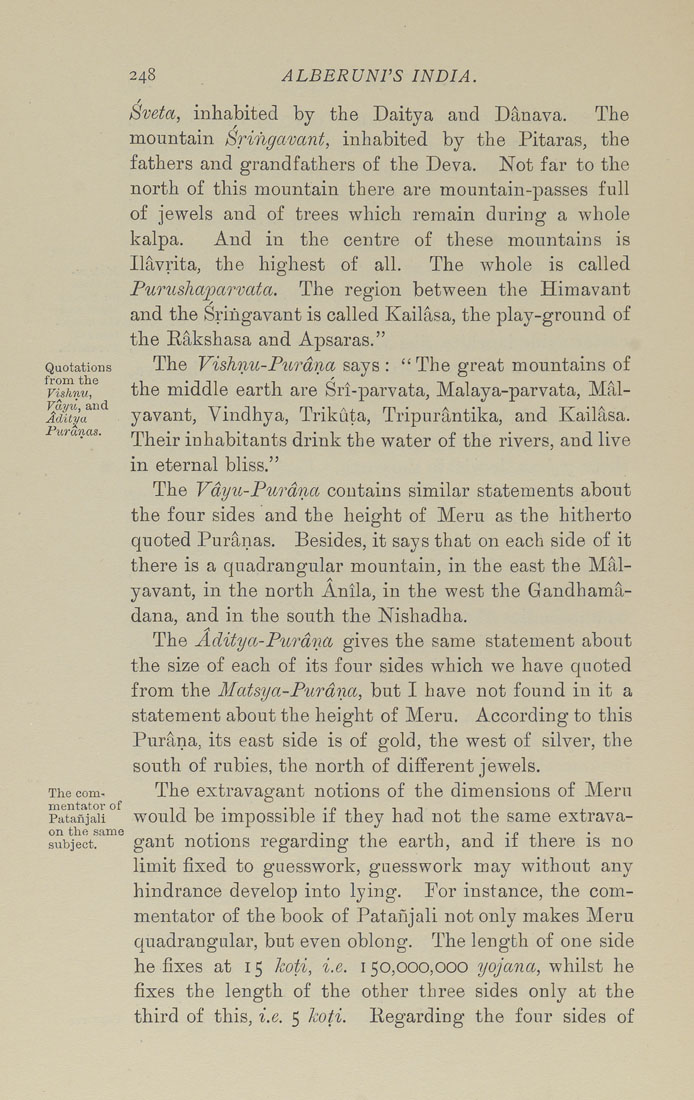Bīrūnī, Muḥammad ibn Aḥmad, Alberuni's India (v. 1)
(London : Kegan Paul, Trench, Trübner & Co., 1910.)
|
||
|
|
|
|
| Page 248 |

248 ALBERUNPS INDIA. Quotations from the Vishnu, Vjlyii, and Aditya Puranas. The com¬ mentator of Patanjali on the same subject. Sveta, inhabited by the Daitya aud Danava. The mountain Sringavant, inhabited by the Pitaras, the fathers and grandfathers of the Deva. Not far to the north of this mountain there are mountain-passes full of jewels and of trees which remain during a whole kalpa. And in the centre of these mountains is Ilavrita, the highest of all. The whole is called Burushaparvaia. The region between the Himavant and the Sringavant is called Kailasa, the play-ground of the Rakshasa and Apsaras." The Vishnu-Burdna says : " The great mountains of the middle earth are Sri-parvata, Malaya-parvata, Mal- yavant, Vindhya, Trikuta, Tripurantika, and Kailasa. Their inhabitants drink the water of the rivers, and live in eternal bliss." The Vdyu-Purdna contains similar statements about the four sides and the height of Meru as the hitherto quoted Puranas. Besides, it says that on each side of it there is a quadrangular mountain, in the east the Mal- yavant, in the north Anila, in the west the Gandhama- dana, and in the south the Nishadha. The Aditya-Purdna gives the same statement about the size of each of its four sides which we have quoted from the Matsya-Pur ana, but I have not found in it a statement about the height of Meru. According to this Purana, its east side is of gold, the west of silver, the south of rubies, the north of different jewels. The extravagant notions of the dimensions of Meru would be impossible if they had not the same extrava¬ gant notions regarding the earth, and if there is no limit fixed to guesswork, guesswork may without any hindrance develop into lying. For instance, the com¬ mentator of the book of Pataiijali not only makes Meru quadrangular, but even oblong. The length of one side he fixes at 15 koti, i.e. 150,000,000 yojana, whilst he fixes the length of the other three sides only at the third of this, i.e. 5 koti. Regarding the four sides of |
| Page 248 |







